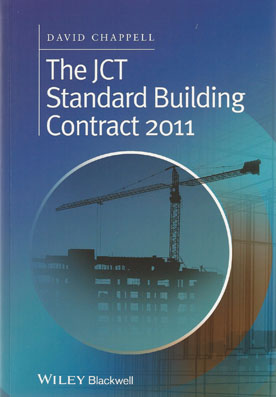
This is a straightforward and concise book about a complex but commonly used standard building contract. As far as possible free of legal jargon, it sets out exactly what the recently revised JCT Standard Building Contract 2011 requires in various circumstances.
JCT Standard Building Contract 2011 is a simple book about a complex but commonly used contract, but it is not brief or superficial. Rather it is straightforward, concise, and as far as possible free of legal jargon.
It sets out exactly what the contract requires in various circumstances and explains, often from first principles, exactly what is meant by a contract and why certain clauses such as extension of time clauses or liquidated damages clauses are present. The book is divided into topics and most chapters include a section dealing with common problems which arise in practice. Tables and flowcharts are frequently used to ensure clarity.